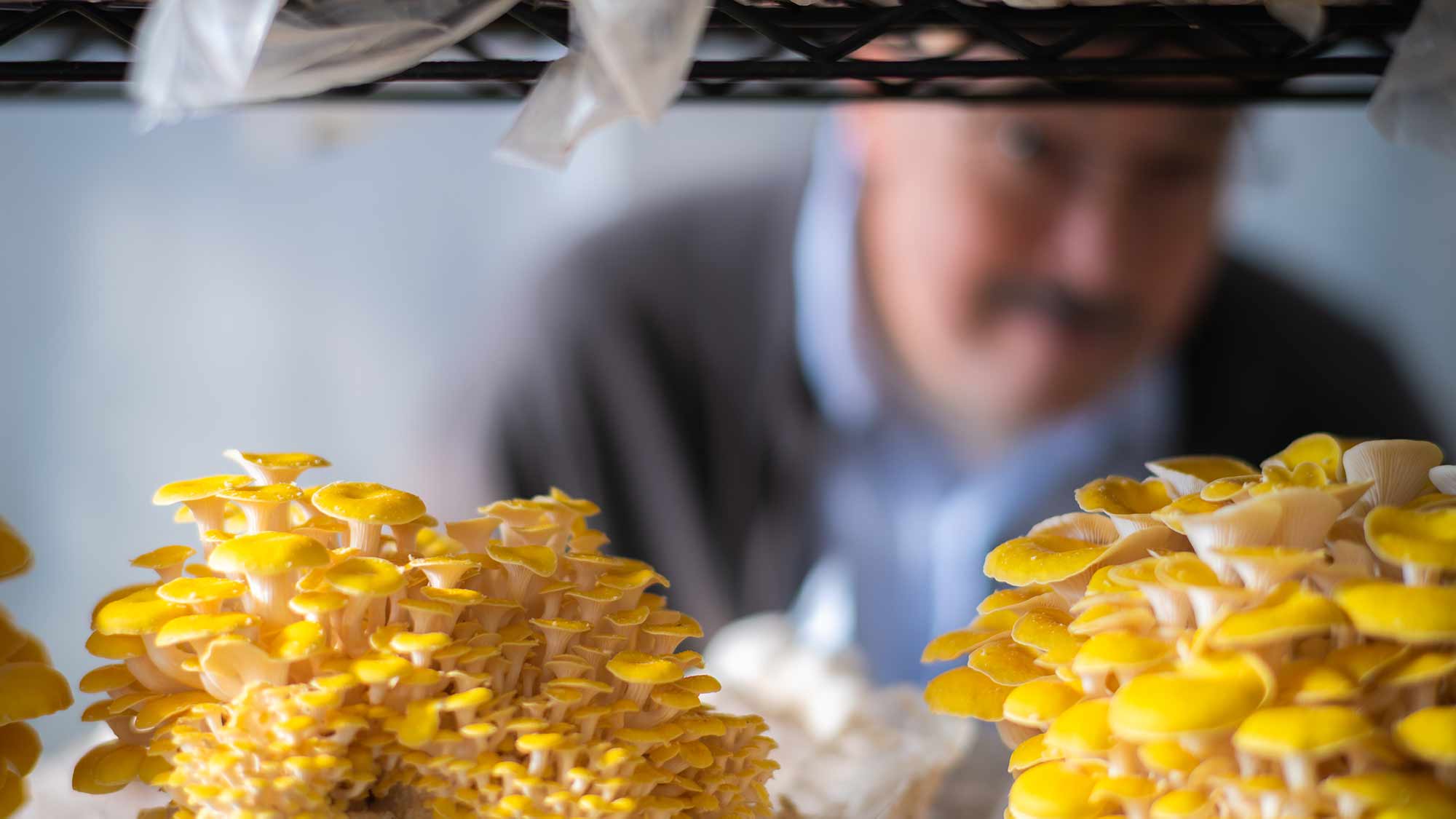David Hibbett, the Andrea B. and Peter D. Klein Distinguished Professor of Biology, has found himself part of a cultural phenomenon centered on the public’s fascination with all things fungal, expressed in everything from pillow designs to the postapocalyptic HBO miniseries The Last of Us. While mushrooms are having a moment, so too is Hibbett, as he explores the secrets of the world’s fungi, taking students up the Ipswich River in Massachusetts to study the fungal genus Lentinus. The project is supported by a National Science Foundation grant for which fellow biologist Javier Tabima Restrepo is co-principal investigator.

“Mushrooms are a window to a secret world.”
Lentinus offers a stunning glimpse of evolution in action. The species Lentinus tigrinus, also known as the tiger sawgill, grows in a classic umbrella shape with gills that emit spores—typical of mushrooms. To researchers’ bemusement, it also grows in a puffball- like secotioid form, in which its gills are covered by a layer of tissue. These two forms are so distinct that they were once thought to be different species, but they’re capable of mating, and appear side by side throughout North America.
Lentinus tigrinus is a wood-decaying fungus that grows on trees such as willows, elms, and maples. It can be found on logs protruding from rivers. Hibbett and Tabima, a mycologist and evolutionary biologist who specializes in genomics and computational biology, are examining the genetic mechanism behind its two forms.
“We want to know how natural selection is working on those genes. There’s something called ‘balancing selection,’ a model of natural selection that promotes the occurrence of two different forms in a population,” Hibbett says. “We believe there may be some balancing selection going on here.”
Hibbett and Tabima are collecting genome data, analyzing the section Tigrini (which contains L. tigrinus) to understand species limits and identifying the genetic region(s) responsible for the secotioid form.
Additionally, the team is assessing whether the genetic regions responsible for the secotioid form are part of positive selection, in which beneficial traits appear more commonly in a population.
The project should reveal valuable insights into the diversity of mushrooms and population genetics. “Mushrooms are a window to a secret world,” Hibbett says, “because they are so fantastic.”

